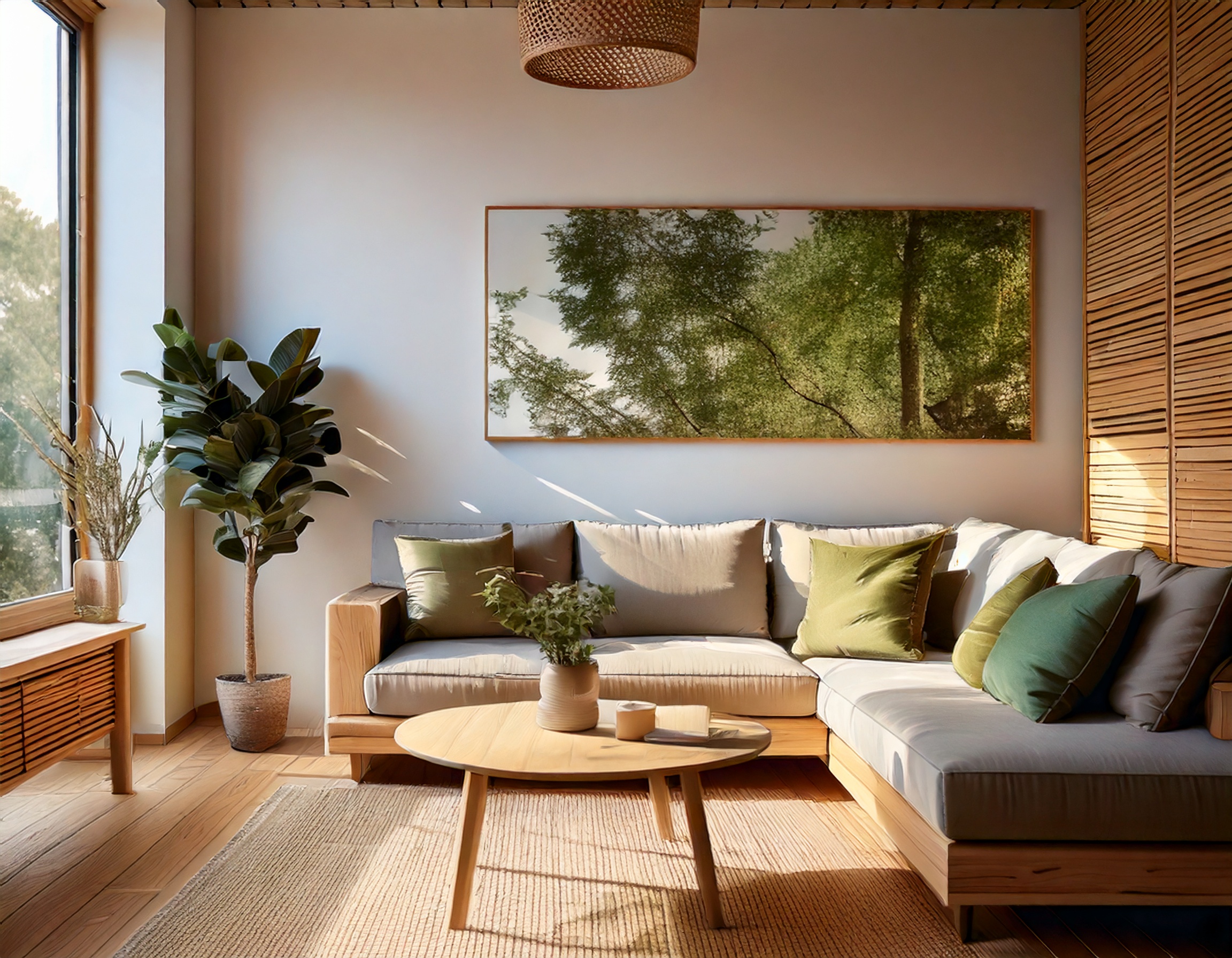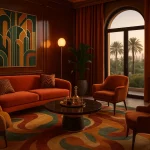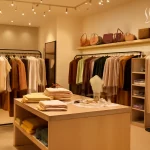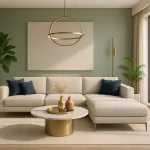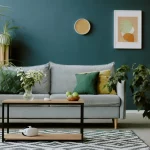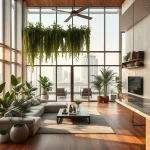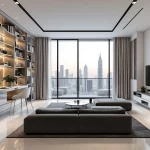Introduction
In the circle of design and architecture, one of the most commonly discussed topics is sustainable home design projects. There are so many contradictory information and claims from the manufacturers. Due to the availability of conflicting details, people find it difficult to choose the appropriate materials for choosing sustainable interior design projects. In this blog, we will provide you with information related to innovative materials required for sustainable home projects.
What is Sustainable Interior Design?
To achieve balance sustainable designing projects merge the new and old materials. The key directives for this purpose include reusing, recycling, and upscaling. These bring down the waste products from building and renovation projects. As far as sustainable home design projects are concerned, these call for minimal usage of new materials. To know about how sustainability works, there is nothing better to tell than interior designers. As a result of sustainability unwanted materials or components are granted a new lease of life. The unwanted components in eco-friendly projects include kitchen cupboards and old tiles. Rather than disposing them off they are rather upcycled or reused.
Top Materials for Sustainable and Eco-friendly Homes
Annually an innovation takes place with increased use of materials in eco-friendly way . The most impressive thing about sustainable materials is that they are known for their creativity and inspiration. Hence, such materials allow for improved well-being of the residents and bring down the operational costs. Some of the most common sustainable materials are as follows:
Natural Raw Materials
The building materials derived from natural sources such as sand, wood, and clay are known as natural materials. These are either minimally processed or often unprocessed, known for their aesthetic appeal and durability. While sourcing these sustainable materials and harvesting practices minimize environmental impact and ensure their continuous availability.
Cross-laminated Timber ( CLT )
Cross-laminated timber is the first material used for sustainable home ideas. These combine two layers of solid-sawn lumber by gluing them together. This layered wood is transported to the site and often created into modules. Cross-laminated timber (CLT) appears structurally sound since it glues wood layers perpendicularly. These are primarily used in columns, walls, and beams as non-load-bearing structures. Furthermore, these sustainable home structuring materials are also known for load-bearing structures as well.
CLT requires a smaller foundation since it is structurally sound and lightweight. As a sustainable home design material, it can reduce the time and cost of construction. Moreover, you can manipulate it according to your plan due to its flexible approach.
Natural Clay
The second innovative and sustainable design material in the list is natural clay. It consists of soil or finely-grained natural rock. As a material natural clay is easily available at low cost, known for its high plasticity. There are various uses of clay as a sustainable design material including flooring, plaster, and render paint. The properties of natural clay include fire resistance, thermal insulation, durability, and robustness. As a sustainable design material, these are essentially used in rammed earth, adobe, and cordwood.
Bendable concrete
Bendable concrete is a groundbreaking sustainable design material that offers malleability as compared to concrete. It tends to adapt and flex according to the situation and is an essential aspect of architectural design, offering several possibilities. With bendable concrete, you can create wide range of applications. These range from seismic-resistant structures to curved façades, showcasing a remarkable function, form, and fusion.
Solar Glass
Solar glass as a sustainable design material is known for several things. These include versatility, strength, and elegance. Many buildings have used solar glass as one of the key components of the building, over the last decade. The purpose of solar glass as a sustainable design material is to help integrate the capacity of power generation. It converts electricity from the ultraviolet wavelengths It absorbs from the existing renewable solar energy.
Cork
Compared to plastic or leather, cork is considered a better alternative as a sustainable design material. It is both renewable and biodegradable material, used for the insulation of commercial buildings and homes. In terms of weight, cork is considered the lightest among solid substances.
Rammed Earth
Rammed earth includes compressed clay, gravel, silt, and sand combined together within a framework. It is used as a sustainable design material in buildings’ foundations, walls, and floors. Rammed earth has qualities of reusability post demolition, load-bearing capacity, low embodied energy, and high thermal mass.
Recycled steel
Recycled steel comes seventh on the list of sustainable design materials. It is among the most common materials recycled and does not lose its properties, hence remains usable. You can use it as an alternative to new steel for construction purposes. The main reason to do so is its durability and strength. This makes it different from other sustainable design materials used in construction.
Pollution Absorbing Bricks
Also known as ‘Breathe Bricks, pollution-absorbing bricks are an excellent replacement for traditionally used bricks. As a sustainable design material, these filter out pollution from the external environment and let the clean air inside the building. It traps the pollutants inside the brick with its air filtration system. These bricks as sustainable design materials are effective in areas where the air quality is considered very poor.
ByBlock
The ninth sustainable design material in the list is ByBlock, composed of plastic waste. These use minimal materials for installation and possess a low-emission process. ByBlock can be used for a variety of purposes. These include landscaping, retaining walls, privacy, sheds, and fencing.
Conclusion
The architecture and design industry, including The Reliable Interior Design Dubai, uses sustainable design materials to create positive change. Thus, by using these materials, architects and The Reliable Interior Design Dubai counter high carbon emissions and make the earth a better place to live. Even though one cannot see immediate results, however, changes may be fruitful for future generations. In the hope of arriving at better solutions, many architects and our company have started focusing on addressing the situation of environmental hazards and urged the usage of sustainable design materials and practices.

